The Leica M5 is the odd one out in the Leica M family line. It’s the camera that nearly put an end to the Leica rangefinder after it was balked at by Leica users of its day for being too big, heavy, ugly and incompatible with what came before. Despite this, a search on Google will now bring up more posts that extol its virtues than speak negatively of it – the Leica M5 seems to have been given a second chance.
These days the M5 is quite often referred to as the last of the great Leicas. It was made prior to the cost cutting processes imposed on the Leica M4-2, and like the M3 that came a few generations before it, it was designed as a no compromise camera created to fulfil all the requirements of the rangefinder photographer of its day. With what is clearly a great deal of thought given to its design, (and no doubt cash) it was intended to move the rangefinder a step forward. It was for example the first Leica with a integrated coupled light meter; a meter that to this day is seen by some as the best meter in any Leica rangefinder. Perhaps because of all its positive traits, where the M5 was initially shunned, it now seems almost fashionable to favour it.
But which is the reality, the former or the latter? Did and does the Leica M5 it deserve its earlier fate, was it shunned by the public for good reason? Or are those who are now enlightened to its technical qualities right, and is it in fact Leica’s misunderstood masterpiece?
A short preface…
I was asked the other day if I know what I am going to say about a camera before I start writing the post. It took me a moment to answer, as I don’t think I’ve really thought about it before, at least not consciously. The conclusion I came to was that sometimes I do and sometimes I don’t. Sometimes when I start writing a post I’ve already spent enough time with the camera to come to a solid conclusion, and writing the post is just a case of going through the motions. Other times it’s the process of writing about a camera that helps me form a more full and rounded opinion, though even then I tend to start with a fairly solid idea of where the post will go.
This time, writing about Leica M5, I couldn’t have been less sure of where this post was going to go. I started pinning all hopes on the process of writing the post being a helping hand in me gathering my thoughts. Even after a few weeks of using it, I was still completely baffled by the camera. I’ve gotten into the flow of it writing these Leica M reviews, they’ve become so familiar that going from one to the next, picking apart the minor differences between them has become easy. The Leica M5 on the other hand felt so completely different to all the other Leica M cameras that when holding it, I didn’t really fell like I was holding a Leica M at all.
This initially through me, it felt almost like it was made by different brand, and because of this, the context within which I wanted to write about it felt wrong. But then I realised, this is almost the same sense I get when I hold my Leica iiia. The iiia is still very much a Leica, it just doesn’t feel like my other Leicas do – it feels like a precursor or a descendant.
The Leica M5 gives a similar feeling, it feels related, but less directly than I think I was expecting it to. When I realised that I got this similar feeling from the iiia, I felt I also realised what the M5 is. It’s obvious really, it’s a successor. It’s what followed on from the earlier M3, M2 and M4. It was to supersede those early Ms in the way the M3 had superseded the Barnack Leicas before it – or at least that was no doubt Leicas intention.
A little background
Of course, looking back Leica M5 was anything but a successor – it wasn’t a success for a start. As such it seems to jut out of the side of the family line like some sort of black sheep. With the M4 before it and the M4-2 after, two cameras that are very similar to look at, the M5 stands out as something very different. Had it been a success, and had Leica carried on in the same vein, then we would probably see it as the ‘first of the second generation of Ms’, and all the camera that followed would no doubt be different beasts to the cameras we now look back at and currently enjoy.
But that didn’t happen, what happened was the Leica M5 was widely rejected, and 4 years after its introduction in 1971 Leica ceased production. So, why was the Leica M5 rejected as a successor to the M4 when the Leica M3 was so widely accepted as one to the Barack Leicas that came before it?
A lack of physical appeal
As I mentioned at the start of the post, it seems the Leica M5 was seen as being too big and too heavy compared to its older siblings. For me though, the size and weight issues pale into insignificance when you just look at the the thing. I’m pretty certain that the biggest impact on people’s opinions of the M5 is simply the way it looks. Working within the design industry I am perhaps slightly more inclined to put weight on its design as a deciding factor in its demise, but I’m not sure this is all that of an ill founded a conclusion to come to.
The beauty in the design of the Leica M3, is that whilst it manages to be a very functional thing, it also looks aesthetically appealing; the design feels balanced. This might sound shallow, but if you’re a photographer reading this, don’t forget how much importance you put on aesthetics every time you press that shutter. Composition and form and the appreciation thereof is an instinctual thing that runs deep in humans, especially those with a creative eye.
Incompatibilities
The way the Leica M5 looks wasn’t the only factor responsible for its demise. It was also somewhat incompatible with other M-mount accessories and lenses that came before it. The early 21mm and 28mm lenses both had rear elements that sat so close to the shutter that they fouled the M5’s light meter. The 50mm Summicron DR and the 35mm lenses with goggles designed to work with the M3 were also incompatible since the dimensions of the front of the camera were wrong for the position of the goggles lenses. Whilst these lenses work fine on the M2 and M4, they din’t work on the Leica M5.
Competition from its peers
Unfortunately for the Leica M5, even in its day it had its own siblings to compete with. With the Leica M4 apparently still in production, there was still a traditional Leica available if such a thing was preferred. Then, later on in the manufacturing run of the M5, the Leica CL was introduced. The CL also has a built in spot meter, but is about half the size and weight of a Leica M5, not to mention the fact that it was a good deal less expensive. Of course, the Leica M5 is still hampered by all of these shortcomings today. It hasn’t got any less big, heavy or ugly with age, so it now it has every Leica that came before and after it to compete with.
Competing with its peers – My Leica M5 review
So how well does it compete? Firstly, and quite importantly, despite the different way it looks, it does share a good deal of functionality and positive attributes with with its older and younger siblings. Primarily of course it is still an M-mount rangefinder camera – this is obvious to most I’m sure, but perhaps worth mentioning for the uninitiated. It is also bottom loading with a vertically opening rear hatch in the same way all the other Leica M rangefinders are. Another feature common to all film Ms including the M5 is the horizontal focal plane shutter with speeds maxing out at 1/1000th of a second. In short it still offers a broadly ‘Leica M’ experience, and whilst it is incompatible with a few lenses and accessories, it’s by no means incompatible with the most standard and popular of the lenses. This said, its real advantages are not in its similarity to the rest of the Leica M back catalogue, but more in its departure from them.
A departure from the ‘standard’
Whilst fundamentally the Leica M5 is indeed a similar camera to the rest of the M series cameras, the reality is that in use, it couldn’t really feel much different. One of the remarkable things about all the other Leica M cameras, for me at least, is how easy it is to switch from shooting one to the next; they all just feel the same. Even where there are differences, as I take about in my M2 review, the differences are so subtle, choosing from one M to the next almost comes down to being fussy. Not the Leica M5, the M5 feels very different in the hand – in fact it feels so different to handle compared to the other Leica M cameras, that it almost might not be a Leica at all.
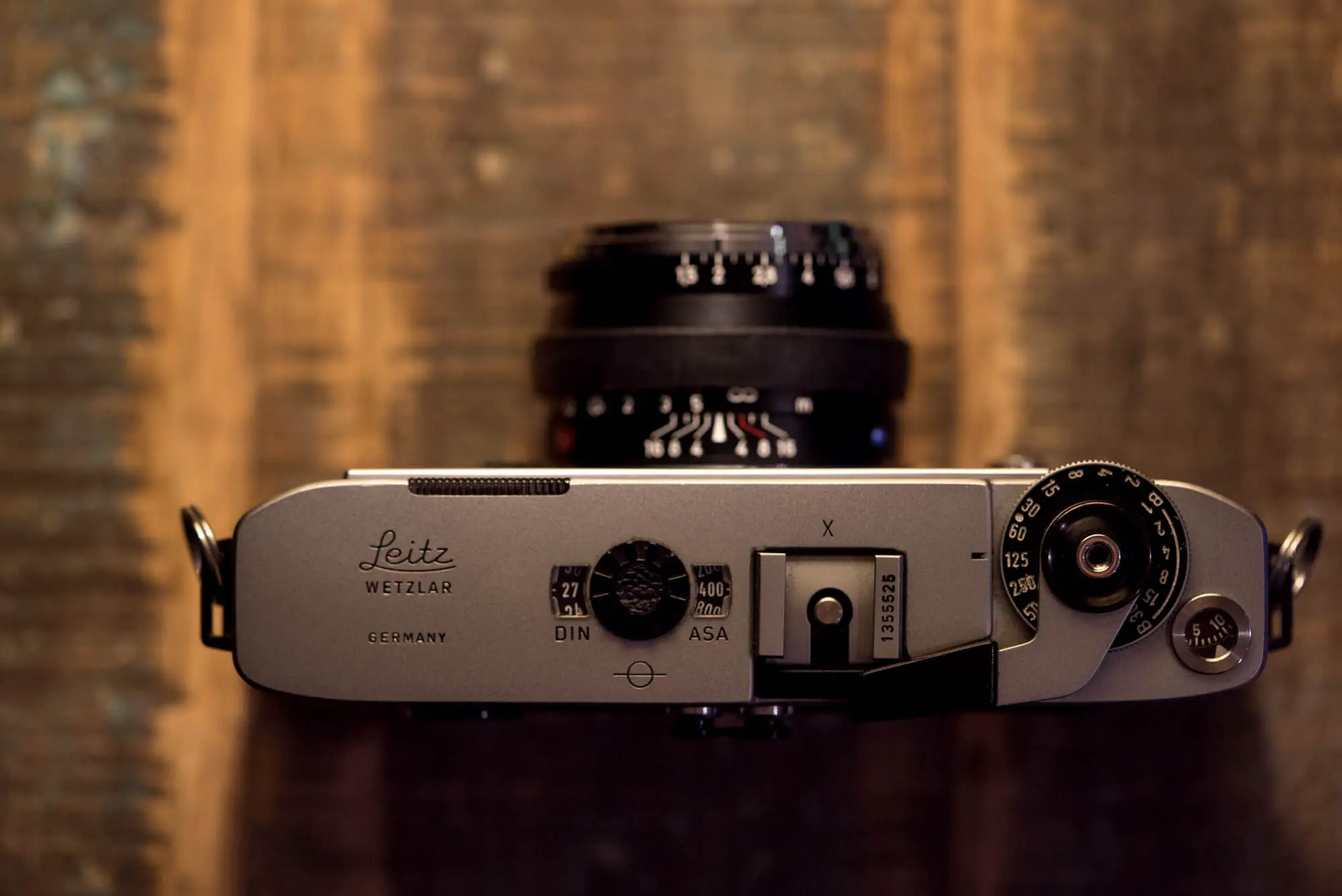
The Leica M5 in the hand – the mechanical and physical differences
The Leica M5 Is bigger and it’s definitely heavier than any standard M, but it’s not particularly obnoxious by either measure. Of course this will depend on tastes and as someone who favours smaller cameras I do find it a touch on the large side; many possibly wouldn’t. Unfortunately if I were actively to criticise the way the Leica M5 feels in the hand, it would only be to comment on how everything seems a little more thin (for want of a better word) than I expected; I just somehow slightly less solid than my M3. This might sound odd as it’s a heavier so should if anything feel more solid, but it doesn’t. Tapping on the plate metal of the camera gives a less solid sound, it doesn’t feel like the metal is as thick as that of my other Leicas. But even beyond that, the overall feel of the camera isn’t the same.
The concentric shutter speed dial and film advance lever is a good example of this. Whilst the shutter dial overhanging the front of the camera makes for a very easy user experience (a point I shall come back to in a moment), the dial itself isn’t quite as solid a feeling thing as you might find on the likes of an M3. This insubstantial feel is then emphasised by the two piece plastic and metal film advance which as I’ve mentioned before on this blog, I just don’t like.
This all said, whilst it might not feel as solid, and might be quite big, somewhat more objectively speaking it still feels good in the hand. As soon as you start to use it, any size or feel differences become slightly less relevant as pretty much every feature of the camera feels like it’s in the right place on the camera. Not only do the parts feel like they are in the right place, but the moving ones feel very smooth and quiet.
The last of the traditionally made Leicas
The Leica M5 is the last the traditionally made Leicas. This is one of the “pros” often highlighted by its advocates. It was the last camera that Leica made in the traditional way with brass internal parts rather than the later precision machined steel. The shift to precision steel manufacture is something a lot of people seem to get their knickers in a twist about. So for some, with the M5 sitting prior to this change definitely gains it brownie points. As a relative newbie – or at least as someone looking back at the facts slightly more objectively (and perhaps with a level of naivety/ignorance) – I’ve come to the conclusion that how these cameras were made makes little difference to me. Whilst I do now feel a difference when comparing my new Leica M-A to my fully serviced M3, I don’t think one feels better than the other. The Leica M3 does feel smoother, but to me the M-A feels more true somehow – it’s horses for courses. The point of mentioning this is to highlight my lack of preference. But, whilst I personally couldn’t give a monkeys how the Leica M5 was made, what’s important here is that some people do, and if that old and smooth feel is how you like your Leica, then the M5 definitely sits in that camp.
The mechanics of the light meter
In every bit of text relating to the Leica M5 I have so far read it makes point of the mechanics of the retracting light meter arm. This post is going to be no different. As mentioned earlier in the post this light meter arm is the reason some lenses with deep-recessing rear elements just don’t fit the Leica M5. Later Leicas solve this problem by the cameras meter taking a reflected reading off a patch on the shutter curtain. This later approach not only allows the use of more lenses, but is also mechanically much more simple.
The simplicity of the later Leicas is definitely an advantage to them, but its hard not to acknowledge the mechanical wonder that is the metering arm of the Leica M5. When no lens is attached to the M5 there is no sign of the metering arm, it hides itself away in the lower part of the camera. As a lens is attached part of the bayonet lens mount pushes a small button in the mount of the camera which raises the meter arm into position behind the lens. Pushing the shutter button then lowers the arm out of the way for the photo to be taken before the shutter fires. Of course this means far more parts to potentially break or damage, but it’s impressive nonetheless.
Shutter button
A small disadvantage of this mechanical metering arm is something I noticed the first time a took a photo with the Leica M5, and that’s the impact on the feel of the shutter button. Since the action of the button is not just dedicated to firing the shutter as it is with the rest of the mechanical Leicas, but is also responsible for lowering the metering arm during the first couple of millimetres of the buttons travel, this means shutter release action is quite low in the button’s travel. As such, when you compare it to the M3 for example, it feels a little odd. I get used to it quite quickly, but each time I come back to the M5 after shooting one of my other Leicas, the first the I notice is how much further the button feels like it needs pressing to fire the shutter.
Physical differences
Beyond these mechanical differences there are also a series of relatively minor but definitely notable physical changes that separate the Leica M5 from its peers. What I find interesting is that for every one of the changes made to the M5 over its predecessors there both advantages and caveats.
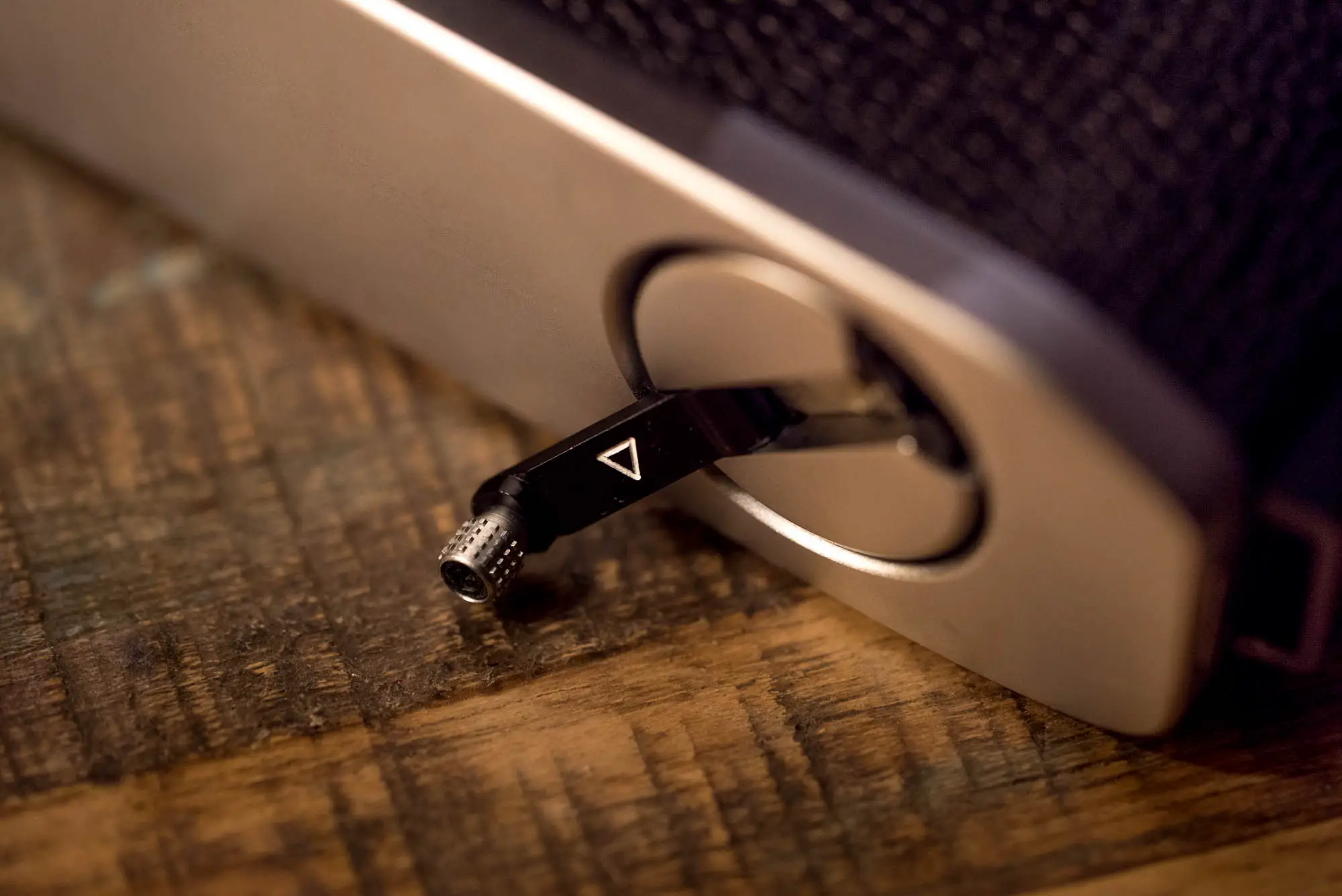
The rewind lever
The rewind levers design and function is a far reach from the standard Leica M. For a start, it’s bigger than that on any other M, yet despite this, because it’s recessed into the bottom plate of the camera, it feels more out of the way. The bigger size makes rewinding feel quicker and easier, yet with it being recessed there is less chance out getting knocked and bent – as recently happens to me when I dropped my M7(!!).
Perfect then? Well, unfortunately not, as for me all of its positive attributes are negated by the fact that it doesn’t rotate when the film is advanced. Rotating rewind levers give a sense of reassurance that the film is loaded properly, something acknowledged previously by Leica on the M3. I’ve had two M3s now, an early DS one and a late one. The early one had a single red dot on top of the rewind knob, the late one had two dots, thus making it easier to see it rotate when the film was advanced. I’m not sure why this was forgotten by the time the M5 was released.
Edit: Since publishing this, a comment below from Gert-Jan Vons made me realise the above paragraph was nonsense.

The ISO dial
The Leica M5 has a dial for setting the ISO on top of the camera. With a range from 6 to 3200iso, it is set by rotating the central plastic ridged dial. Film speeds are displayed in both ISO and DIN either side of the plastic dial. It’s a little difficult to rotate, which is quite reassuring as obviously you wouldn’t want to accidentally change it. I’d argue that in isolation the dial is nicer than that of the M6/MP and M7, the problem is, it’s on the top of the camera. It just doesn’t look right up there, and is one of the things that just feels like it detracts from the overall design of the camera.
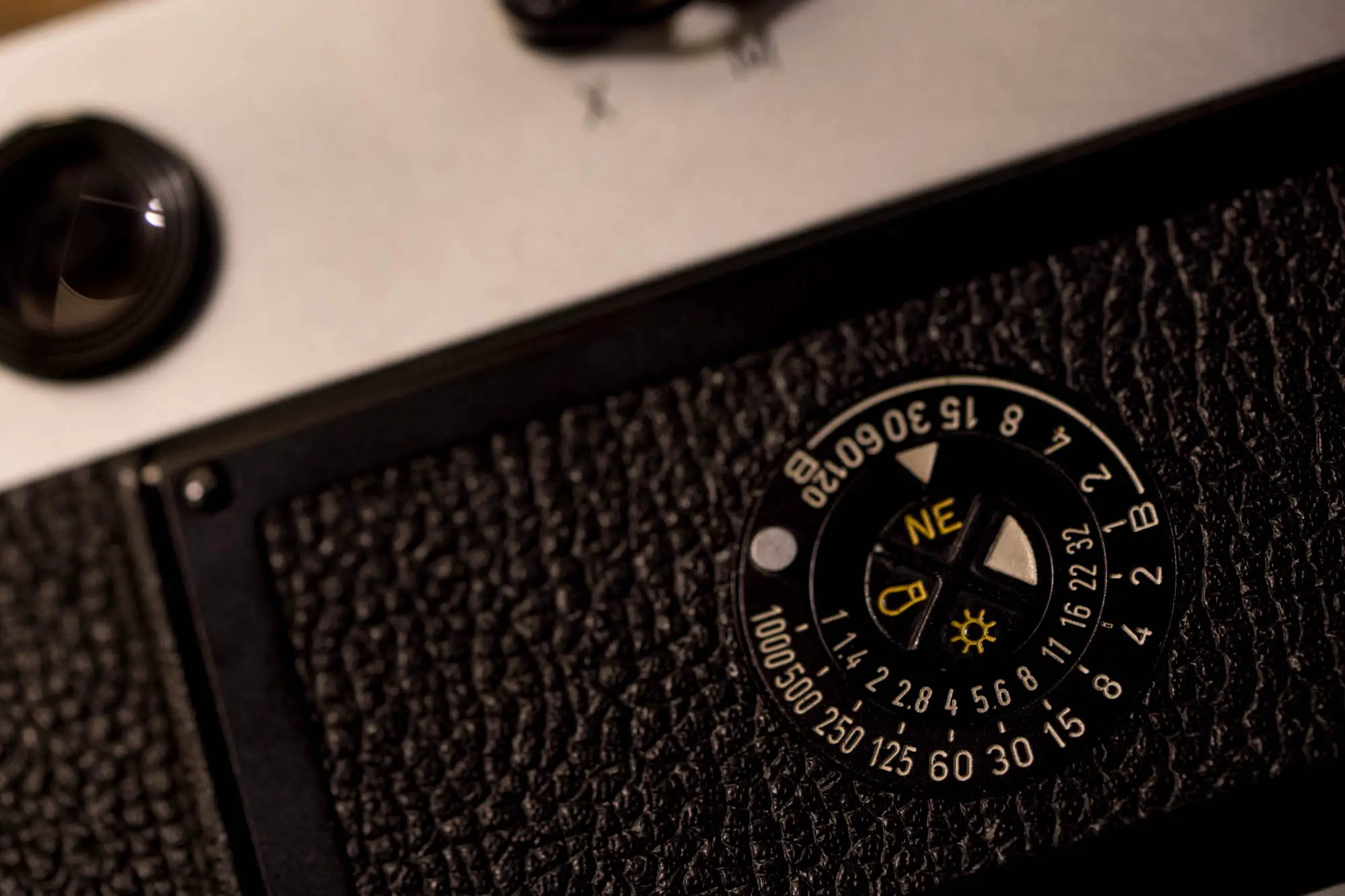
Reciprocal settings dial
Replacing the usual ISO dial on the back is a combination film reminder and reciprocal setting reminder. The basic idea is that once you’ve set your settings based on the light meter readout in the camera you can then transfer these to the dial on the back and effectively see all other reciprocal settings for the exposure value. I’m not sure I’ve seen anything like this on another camera, and I’m not entirely sure how useful it really is either? Personally, I’m yet to find myself motivated to use it.
Strap lugs
The strap lugs seem to be a bit of a point of contention with the Leica M5. The early version of the camera only had two strap lugs on the one side. In theory I love the idea of the side mounted strap lugs, the idea of the camera hanging vertically just seems to make sense. This was in fact just how I attached my strap when I first started using it. Unfortunately, I was almost instantly let down by this arrangement, as soon as you try to put the camera to your eye you find a strap in your face. Thankfully mine is a later 3 lug version so I just swapped the one side of the strap to the other for a more conventional carrying experience. Unfortunately, the strap lugs are the type designed for the strap to be attached directly and not via a split ring, so even with the lugs on both sides, its not ideal for the straps I use.
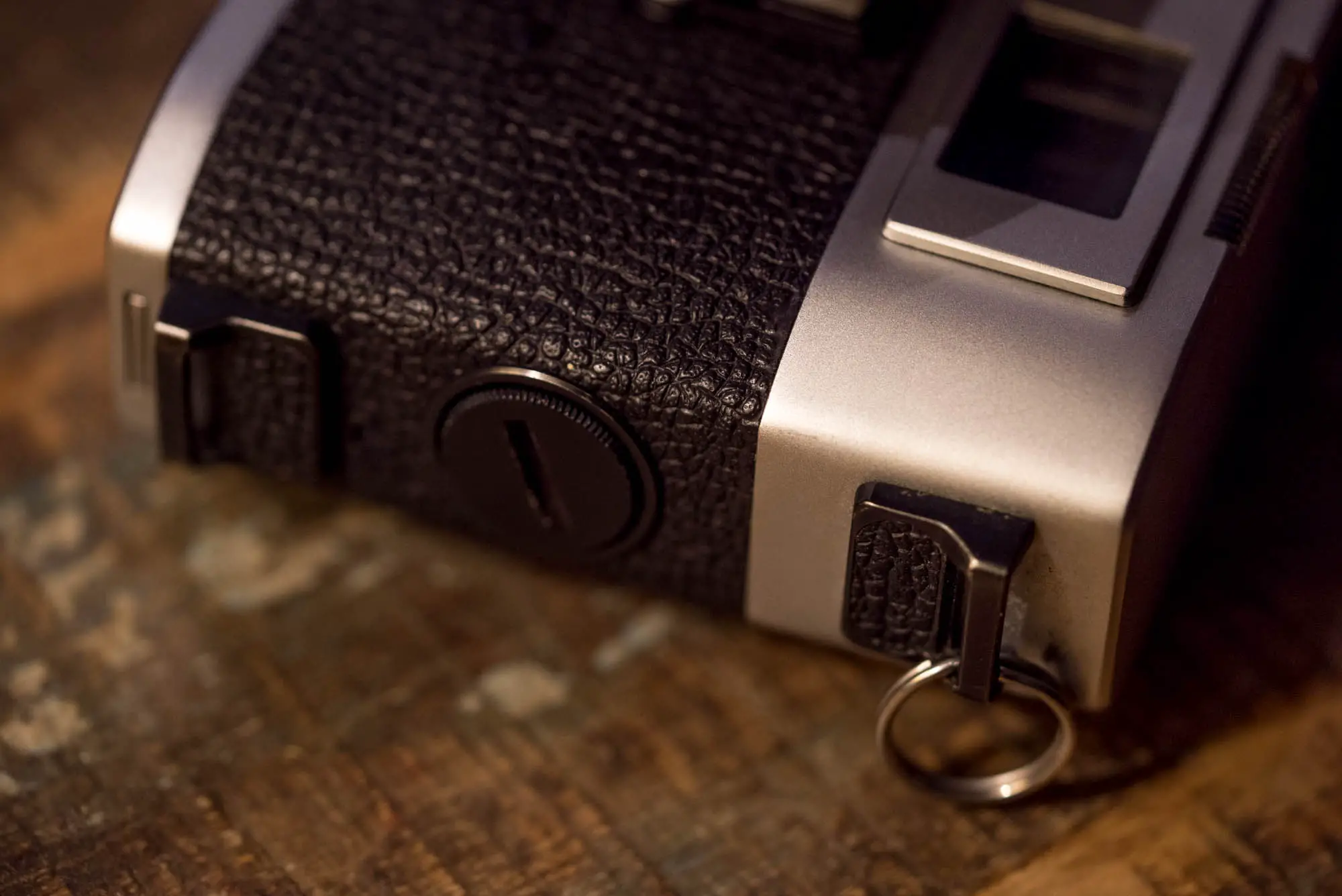
The battery and electronics
Inserted into the side of the camera, rather than the front like on later models, the battery is unfortunately the once popular but not no longer available 1.35v PX625. Though these the batteries are no longer around, you can use the modern 1.5v version, there will be an impact on the light meter though. Fortunately for me, a little while ago I invested in what’s called an MR9 adapter. A clever little gadget that takes the very common LR44 battery and converts in both in shape and voltage to match the old PX625 type.
Battery check
Unlike any the M6, MP and M7, the M5 has a fairly useful battery check. Built into the frameline preview lever. When the 35/135 frameline is selected, the light meter needle in the viewfinder swings across to a notch in the meter index bar that indicates the battery voltage is fine for correct readings. One of my biggest frustrations with the Leica M7 is the battery, not the fact that it’s reliant on one, just the fact that when it’s about to run out of power there is no way of knowing. When it’s too late and the battery is flat it just stops working. The Leica M5 doesn’t need a battery to function, yet despite this, it has a battery check…
Function without battery
One of the biggest so called flaws of the M7, and biggest claimed advantages of the M6 over the M7 is the reliance or otherwise on battery power to keep it working. Like the M6, the M5 functions just find without a battery, though unlike the M6, it’s battery-less function feels a little less elegant. Thanks to the M6’s LED meter, if you take the battery out, it becomes almost indistinguishable in use from a non-metered Leica. Unfortunately this isn’t the case with the M5. Because the meter is so obvious in the viewfinder, when there are no batteries in the camera, it just feels broken. The only way around this is to cover the light meter illumination window on the top edge of the camera.
The Leica M5 in use – The functional differences
Of course once in use, it’s the real functional differences are what are most important, and as mentioned these become almost instantly apparent as soon as you start using the camera. As I’ve alluded to, unlike going from any M body to another, with the Leica M5 there is a definite learning curve. It’s fair to say, that whilst the size difference becomes a little bit less apparent in use, the functional differences feel like they stand out even more. The viewfinder being the first tell tale sign that you are using a very different camera.
The viewfinder
Looking through the the viewfinder there really is very little that makes it feel like you’re looking through the viewfinder of a Leica. The rangefinder patch is a different shape for a start – rather than being a perfect rectangle, it’s left and right edges are curved.
Frame lines
There are four sets of frame lines, which though perhaps familiar to the user of an M4 in terms of their configuration, don’t seem familiar within the M5 finder. The 35mm framelines which are unusually cramped to the edge of the viewfinder share their space with the 135mm framelines. The 90mm lines sit alone in the viewfinder and offer probably the least cluttered view through the finder. The 50mm lines share their space, not with 75mm lines as is common in later M cameras, but instead with some rounded lines that sit quite close around the rangefinder patch. I couldn’t work out what I was looking at to start with, so in the end I looked it up in the manual. It’s obvious in hindsight, these lines are representative of the size of the light meter spot when shooting at 50mm.
Additionally to the above and common only to the M5 and CL there is the shutter speed and matched needle light meter readout display squeezed into the lower part of the viewfinder. What all this creates is a view that’s quite a bit more overloaded with information than that I’ve come to expect from a Leica. Now I should add, I don’t mind a “cluttered” finder, in fact I find it hard to complain about such a useful set of information. But the point is, it all adds up to something that feels like a very un-Leica-like experience when compared to every other Leica I have yet tried. As such, if for example you like the cleanness of the M2 viewfinder, the Leica M5 finder might be a bit of a shock to you.
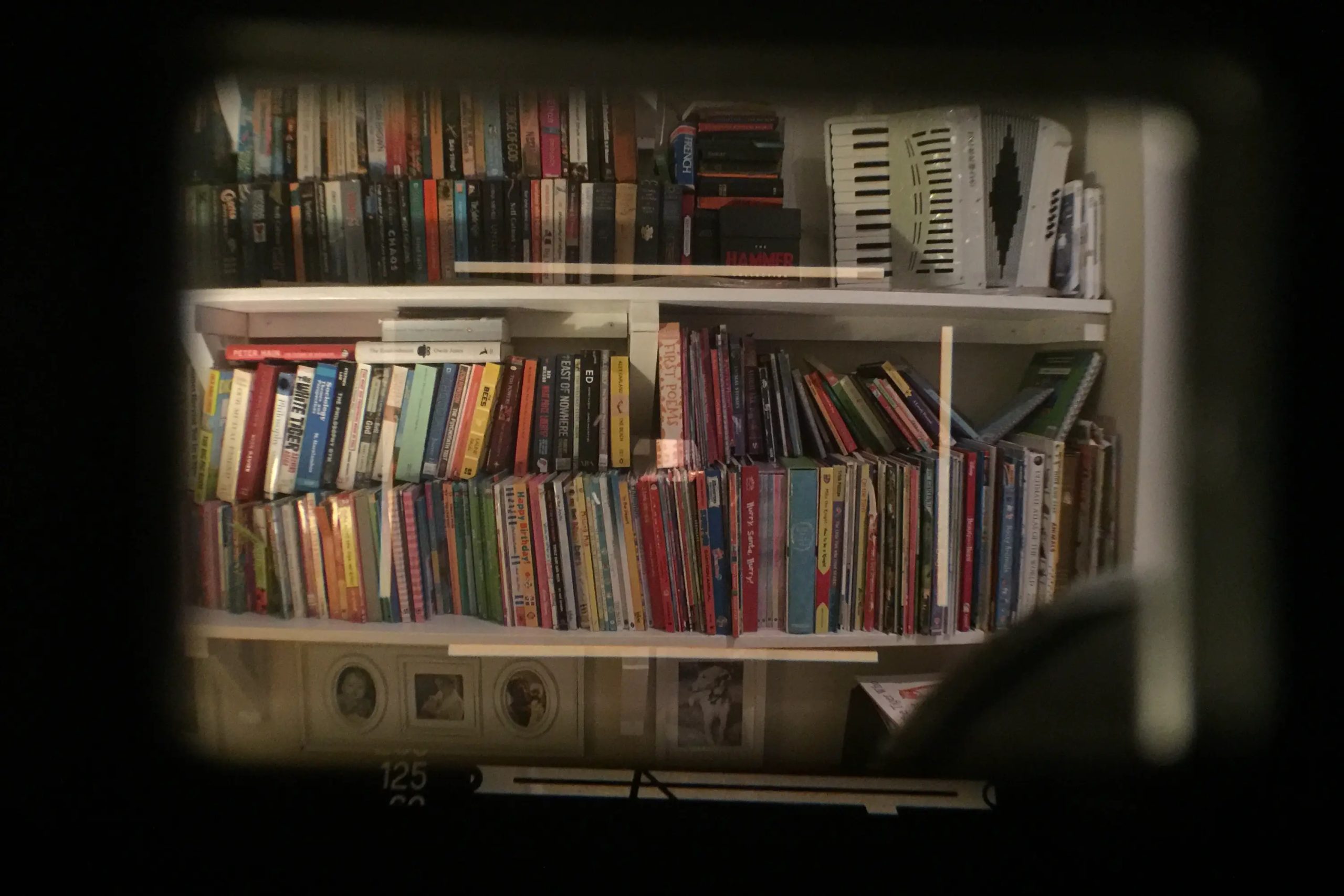
The light meter
The light meter readout in the viewfinder consists of a large rectangle that contains three intersecting lines. The long line parallel to the bottom of the camera represents exposure range, the diagonal line moves when shutter speed or ISO are changed and a vertical floating line that moves depending on the light entering light entering the camera. Quite simply, to get a reading you point the camera at the subject you wish to meter from and change either shutter speed to move the diagonal line to where the floating reading line is. Alternatively you can change the aperture to move the floating line to where the diagonal line is, though since there is no aperture readout in the finder, this is a little more difficult.
Spot meter
The light meter reading is gathered by a spot meter. This differs from the likes of the M6 and M7 that have centre weighted meters. Other than the CL, the Leica M5 is the only metered M mount rangefinder to have a spot meter, so if metering with a spot is your bag, then it’s a hard feature to argue with.
That said, I must admit, in use I found myself treating the Leica M5 very similarly to how I treat my M7 in terms of the size of the spot. Whilst I don’t really know the exact size and fall off of the M7 meter pattern, looking through the M5 viewfinder and seeing those light meter lines, it seemed familiar to how I imagine the sensitive part of the M7 meter to be sized. The reality is probably different, the M7’s sensitivity probably spreads further and falls off more gently than the M5’s spot meter. But how I’ve personally found myself using the two cameras in terms of taking readings is almost identical.
With both M5 and M7 it’s possible to point the camera around the scene at different areas of light and dark to get a feel for the best overall exposure. The M7 is quicker to use in this way though, since with it set to aperture priority it displays the range of speeds automatically in the viewfinder. To take multiple readings like this with the M5 you have to set the shutter to each point the floating needle rests.
What would perhaps make the M5 meter a little more useful would be to have the shutter speeds listed along the bottom of the meter readout like for example in the Nikon FE series of cameras. That way the floating aperture needle would point at the various appropriate speeds giving the user of the camera a quicker sense of potential ideal exposure. Unfortunately though, since the diagonal line in the meter is coupled to both shutter and ISO setting, this wouldn’t have been possible with this design.
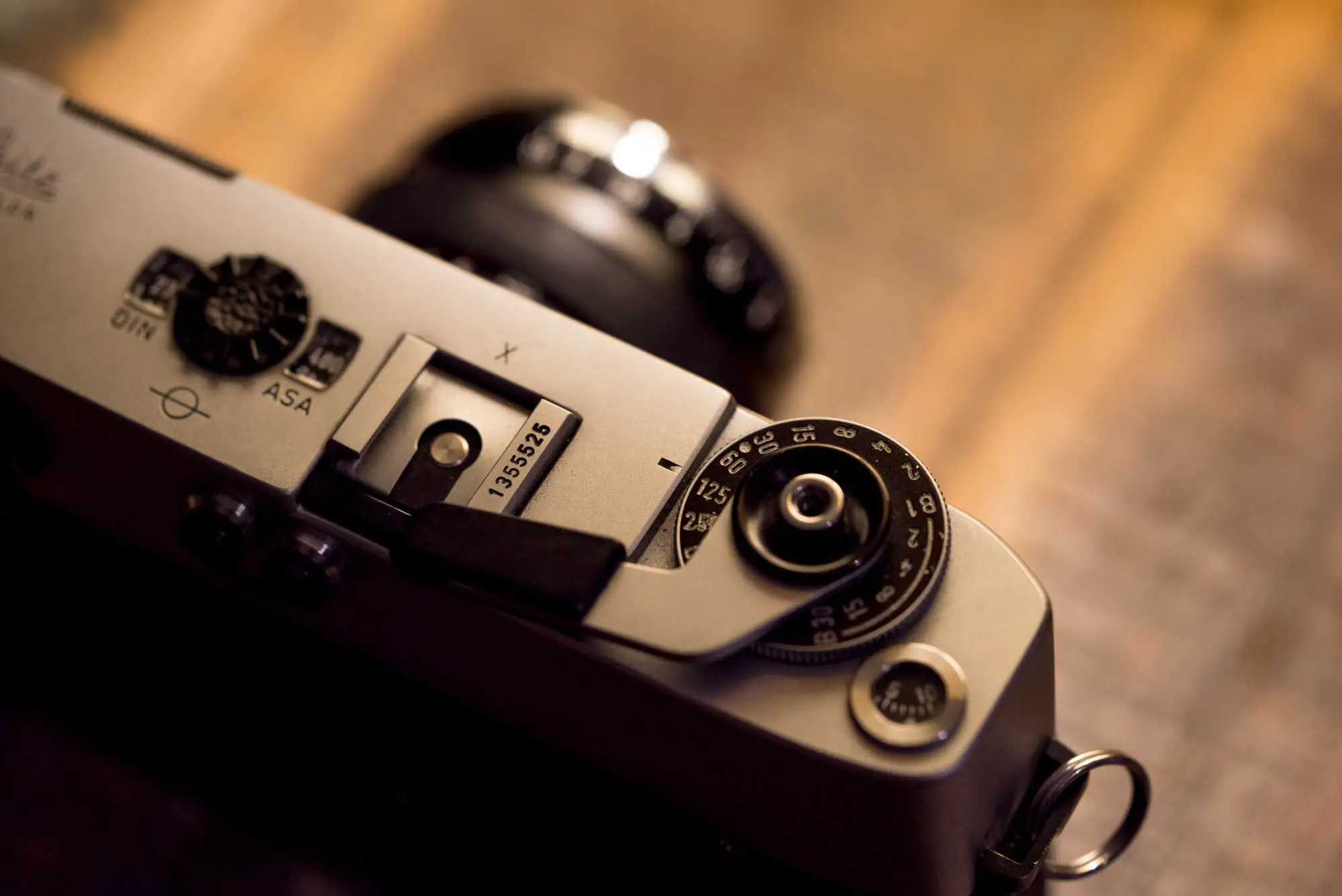
Shutter dial and speeds
The shutter speed dial sits concentric to the shutter button and is larger and perhaps flatter than that of any other Leica M. It also hangs over the front of the camera meaning it can be changed very easily with the camera to the eye. As mentioned the shutter speed is also displayed in the viewfinder adjacent to the light meter readout. The combination of these two features gives the one of the largest potential improvements in function over other Leica M cameras. Though I do want to emphasise here the use of the word “potential” in that sentence, as I think having a shutter speed readout in the viewfinder is possibly only really relevant if you intend to change the shutter speed with the camera to the eye.
Intermediate speeds
A feature only otherwise shared with the Leica M7 is the cameras ability to select more precise shutter speeds. With the M7 this is occurs in aperture priority when the camera uses its electronic shutter to set speeds like for example 1/180th which aren’t on the dial. On the Leica M5, the the shutter speed dial can be rotated to a point in between clicked speeds. As such shutter speed needle can be lined up perfectly to the floating readout needle. Of course there is no confirmation of the exact speed selected as there is with the M7, but I can’t see that this makes much odds really.
Bulb shutter speeds
Interestingly the bulb settings on the dial between 1 and 30 seconds don’t actually do anything to the speed of the shutter. It makes no difference whether or not you select 1 second or 30 seconds all of the speeds are in effect just bulb. This had me scratching my head for a little while, it just seemed completely pointless to have these times on the dial without them being attached to any adjustment of shutter speed. Even the manual is pretty vague when it comes to describing the purpose of these settings. I eventually figured out that where they aren’t coupled to the shutter mechanism, they are still coupled to the light meter. In theory this sounds quite useful, but since the diagonal line in the meter is moved by both ISO and shutter controls, at higher ISO settings it meets the end of the exposure range bar before the slow speeds are selected. This basically means that the slow speed metering is only available with very slow speed film. In fact if you want the camera to give you a reading of 30 seconds you need to have the ISO dial set to 6. So odd is this function that out there in internetland there are quite a few threads on forums where many make out that the slow speeds are little more than some sort of reminder.
A flawed concept?
It’s this limited feature combined with aforementioned coupling of both shutter and ISO to one of the meter needles that the make the Leica M5 meter feel a little flawed to me. Despite the usefulness of the shutter speed being displayed in the finder, the way the meter works – specifically at the extremes of its range – just feels a touch clumsy in the way it works.
Now of course, this is measuring the camera by the standards of today, and I’m sure by the standards of the early 1970’s it was quite impressive, but for me this slightly odd functionality makes for a camera that I’m not sure is quite as good as it could have been given perhaps another generation of improvements in this direction.
Unfortunately the M5 was axed with little apparent intention from Leica to continue on in the same direction. The camera that followed the M5 was the M4-2, a camera that retuned Leica to a course they were traveling with the M4. Despite this, I think longer term, the M5 did actually have a child of its own, or at least it saw some of its genetics passed down. I think this happened, not with the M6 as logic might dictate, but instead in the Leica M7, a camera that was introduced 28 years after the M5’s demise.
Comparing the Leica M5 to the M7 – Prescribed usage
As you might have noticed I’ve made a few broad comparisons to the Leica M range throughout this post, but above all other cameras I’ve been making comparisons to the Leica M7. In fact, to my mind the comparison to the M7 is only direct comparison that needs making when looking at the M5 as closely as I hope I have. I’m sure many would argue for a comparison with the M6/MP, but to me the M6 just is too different a beast.
All the non-metered Leica M cameras provide what I’d call an unprescribed shooting experience. That is to say that since they are fully manual, they can be shot with by the preference of the user. The M6/MP with its built in meter offers a meter that is so simplistic that how the information it gives is gained and interpreted comes down to the whims of the user (I talk about this idea further in my M6 review if you are interested). This is of course what gives the M6 and MP such appeal, the light meter is there for when it’s needed, but when it’s not it can be ignored. In fact, take the battery out of an MP, and to all intents and purposes you have an M-A; take the battery out of an M6 and you have an M4-P. In short, the uncomplicated experience of shooting a non-metered Leica M remains in both the Leica M6 and MP
Both the M5 and M7 give something more, or at least something else… What the M5 and M7 share is something that no other film Leica M has, and that’s a sense of a prescribed function. These camera’s level of functionality feels as though it’s been honed more toward the desires of specific photographers with certain requirements. I love my M7, I love the fact that it has an autoexposure mode that works exactly how I like autoexposure to work. I’d even go as far to say that I feel like the M7 is honed to my tastes to such an extent that I am willing for forgive it’s shortcomings. But since it doesn’t work properly if you take the batteries out, to someone who doesn’t gain anything from the AE of an M7, it would be pretty much the worst Leica to choose. As such, it can be said that the Leica M7 is somewhat honed away from the tastes of other Leica M users.
The Leica M5 is the same. If you like a spot meter in a camera, and you can get on well with a matched needle light meter if you’re looking for a Leica M, the M5 is going to appear a very strong contender. And then once in use, if the way it works feels honed to your tastes, then any other Leica M, might just feel flawed by comparison.
A sense of manual aperture priority
I mentioned in my recent Petri Color 35 review it’s hard to get away from the sense that it’s supposed to be used in a sort of manual shutter priority mode. Well similarly, the Leica M5 also feels like it is designed to be used in a certain way, though not as a shutter priority like the Petri, but instead as a sort of manual aperture priority camera.
With the shutter speed being displayed in the viewfinder, it just makes sense to choose the aperture before the camera is raised to the eye. Once the decision about aperture is set, the camera can be raised to the eye and an appropriate shutter speed can be chosen based on the light meter readings displayed in the finder. Whilst this isn’t an automatic aperture priority, the process is much closer to aperture priority shooting than anything else. Of course it can be used however which way you like, but the point is, in use the Leica M5 gives a sense that this way of using it is more logical than any other.
This is really what I’m talking about when I say it has a “prescribed function”. Unfortunately it’s also possibly the biggest functional reason why this camera is so divisive. Like the M7, the Leica M5 has been honed to the desires of a smaller group of photographers who want a camera that works this way. So of course, if you’re not looking for a camera that works this way, it’s appeal might feel somewhat reduced.
So, which is it, masterpiece or failure
Everything I’ve mentioned above in terms of the Leica M5’s comparable differences to its siblings are a part of what gives it the edge for its advocates. The truth is, some people just don’t find the other Leica M cameras that great to handle, and moreover they don’t find their ultra-manual non-metered open-function that appealing. This all means that for said M5 advocates, it doesn’t just compete with other Leica cameras, it’s sits above them.
As Leica must have intended when they first brought it to market, to some the Leica M5 not only superseded the M3,2 and 4, but also supersedes all the models that followed it too. For those people it functions just how they wish a camera to function. So in the same way that I forgive my M7 a flaw that some consider fatal, what I see as the Leica M5’s shortcomings are likely forgiven by its advocates.
Unfortunately, for others – myself included – the Leica M5 just doesn’t hold appeal. For me, it is too big a camera, and it is definitely the least aesthetically appealing Leica by a country mile. But moreover the way it functions just doesn’t fit my desires. That’s not to say I think it’s functionally a bad camera, I just find it a little clunky and slow to use compared to the M7, which to me is the perfect metered Leica.
It’s also my opinion that when compared to the non-metered Leicas, that, well, it just doesn’t really compare at all. If you don’t want a meter in your Leica, there really is no reason to chose the Leica M5 at all in my mind; there are just too many of its features that are impacted by the inclusion of a meter to make it a worth while consideration.
In summary, to answer the question at the beginning of my post about whether or not this camera is the lost masterpiece, or if in fact it deserved its demise… Well the answer is of course both. The Leica M5 is, by many accounts, an awesome piece of equipment! But importantly, this by no means makes it the right Leica for everyone!
Cheers for reading
Hamish
A couple of links:
I bought my M5 from Red Dot cameras in London, if you are ever in their area, I can definitely recommend popping in!
You can find a very interesting review from 1972 here
Share this post:
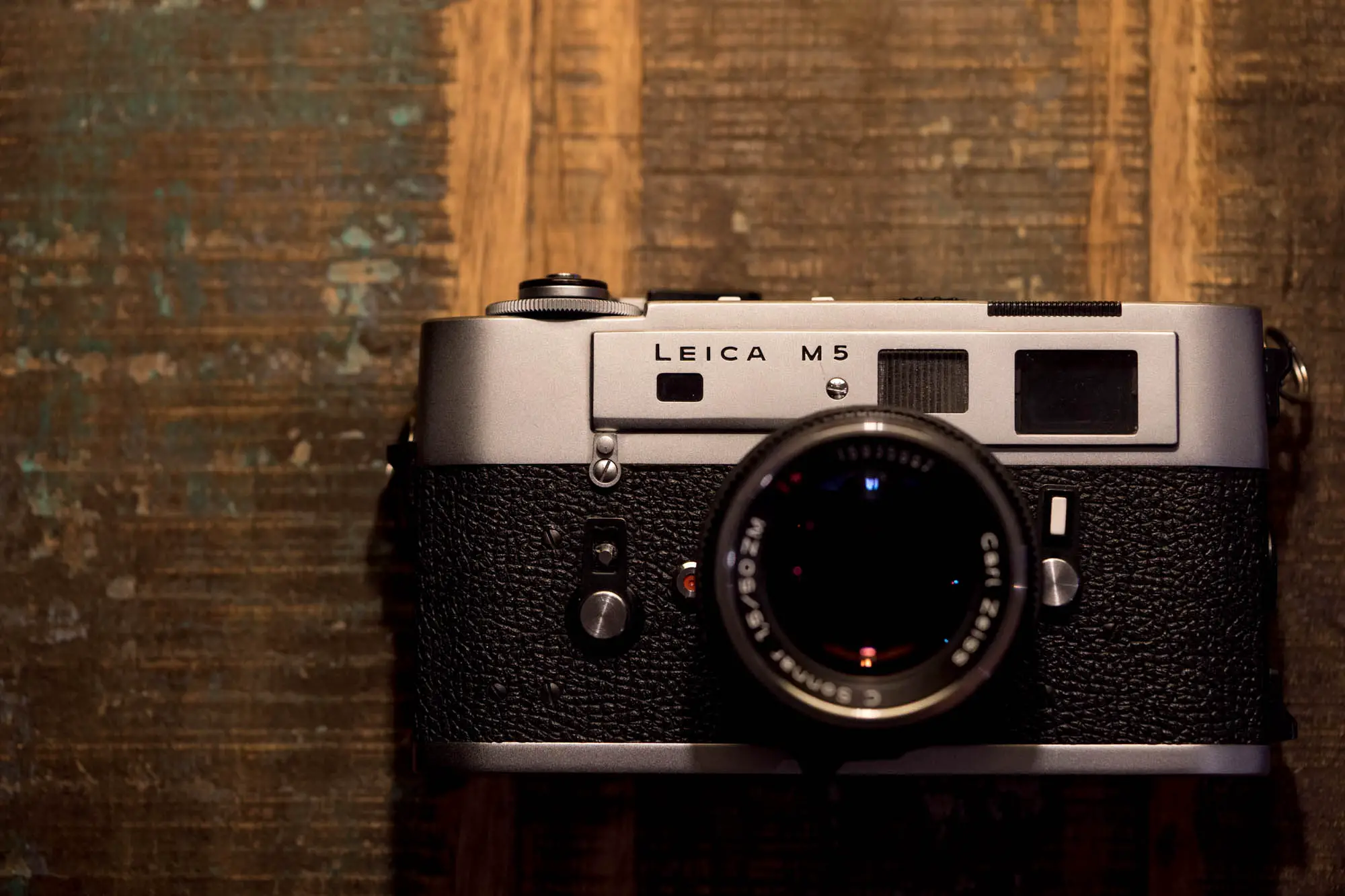
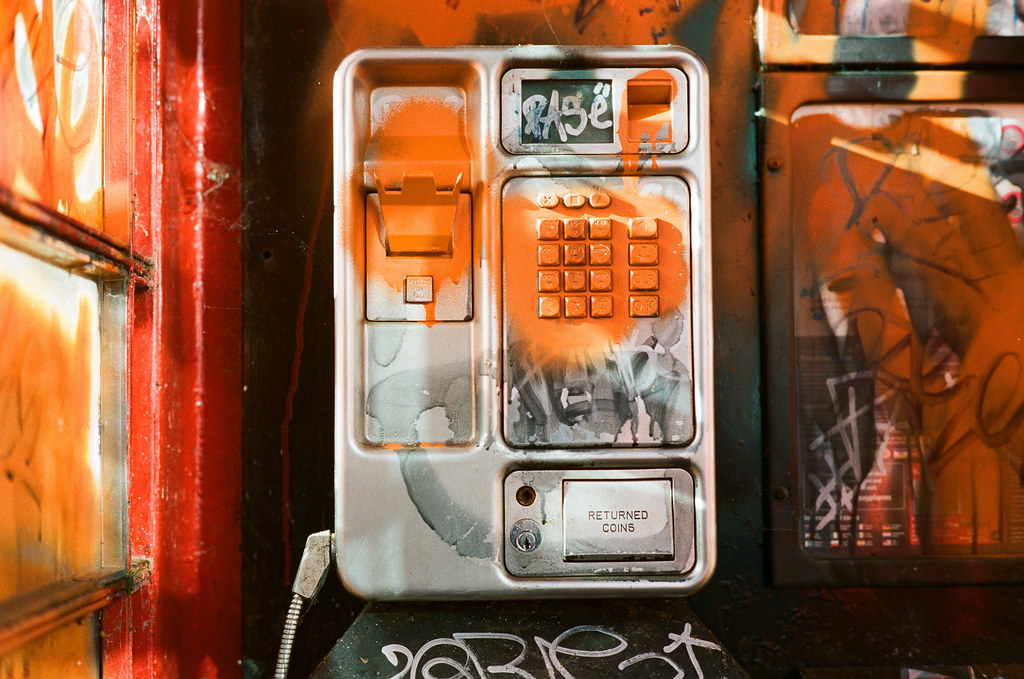
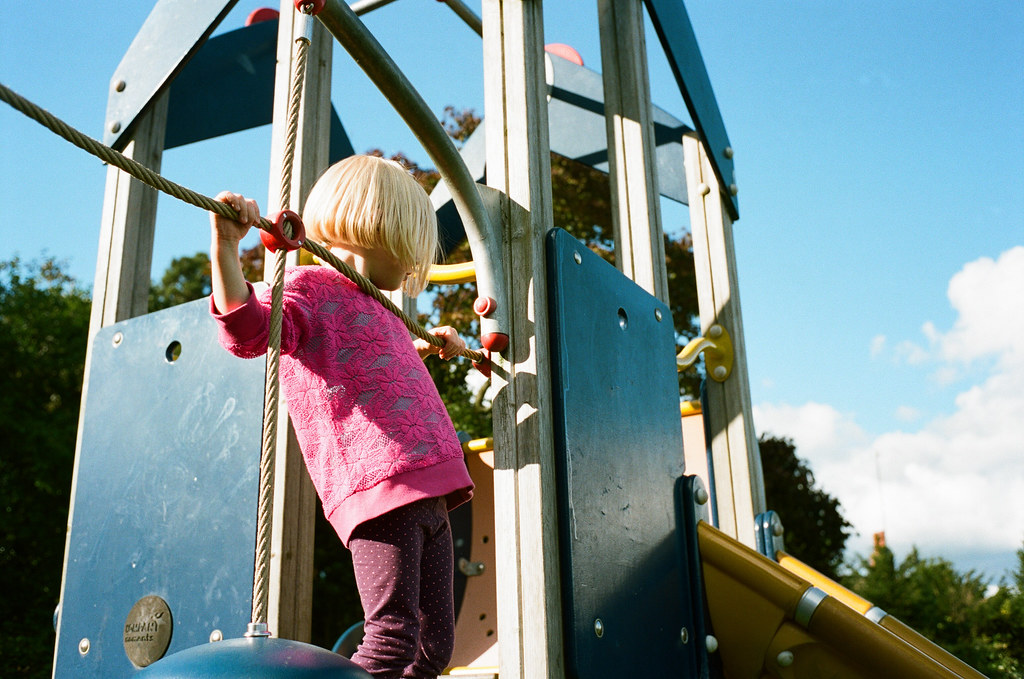
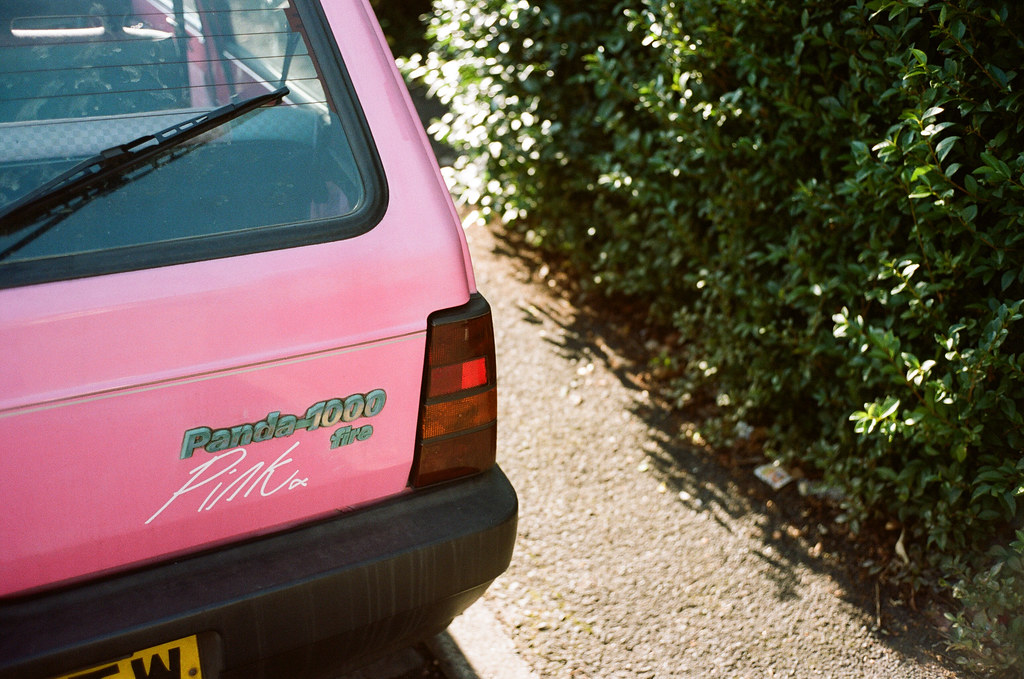
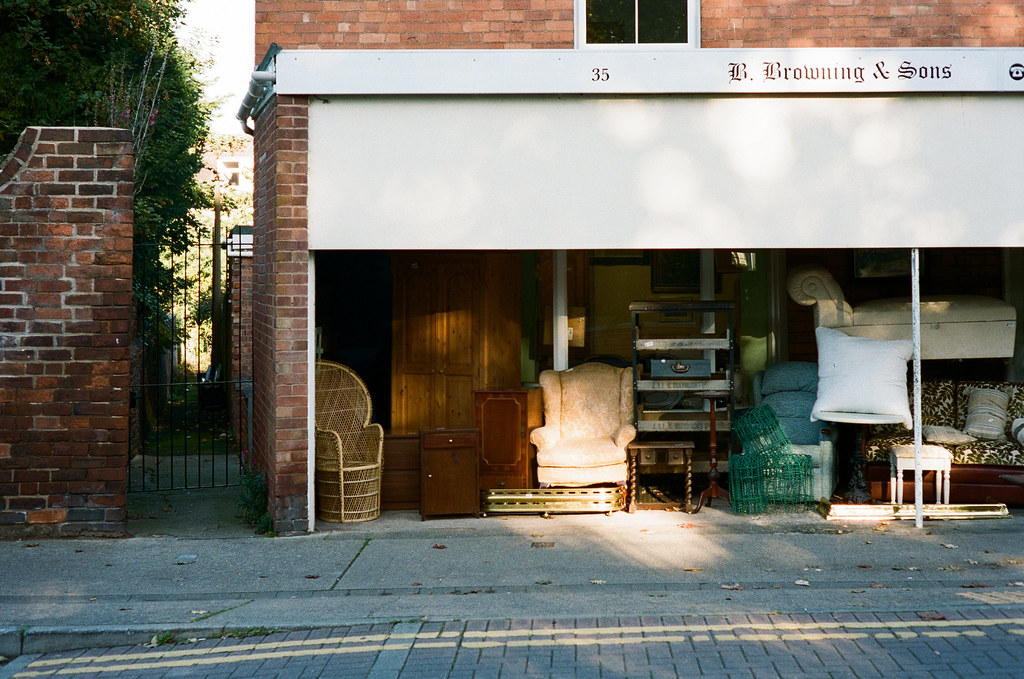
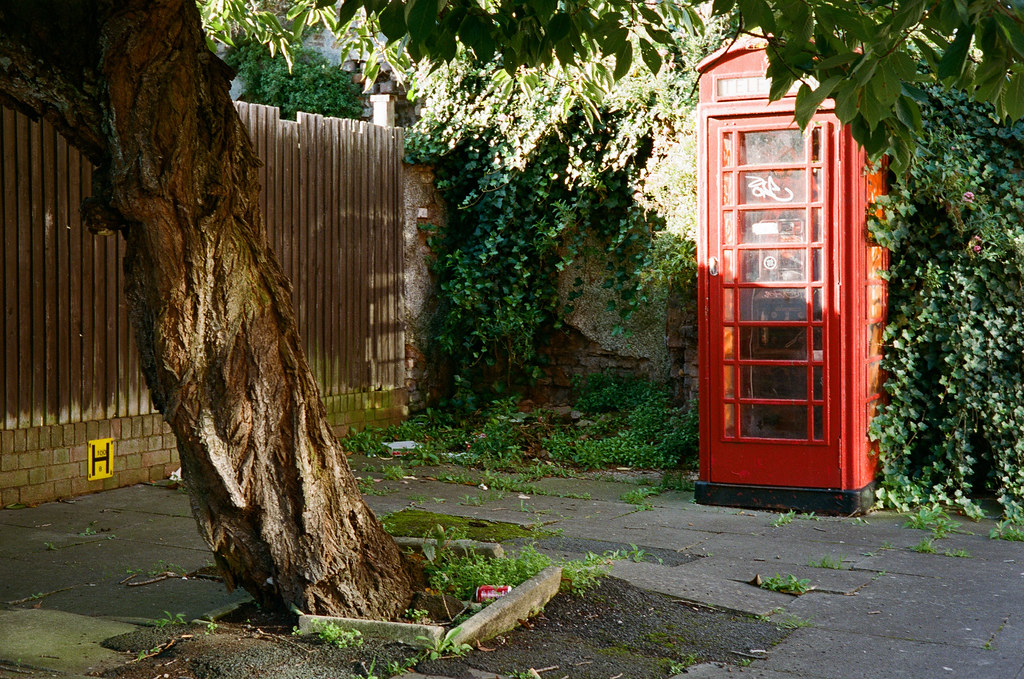
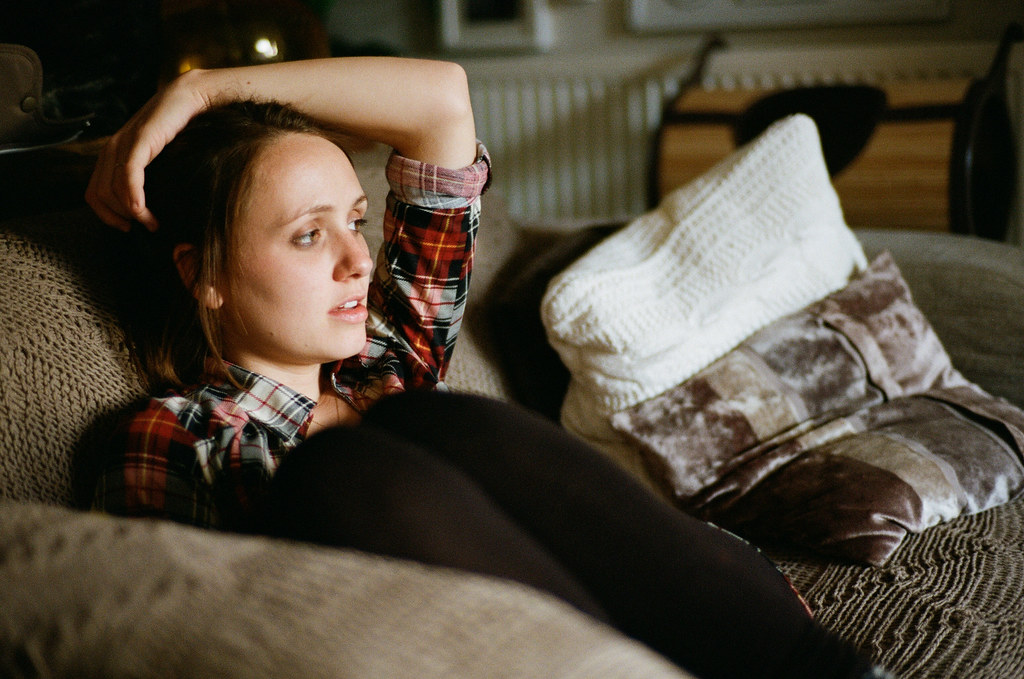
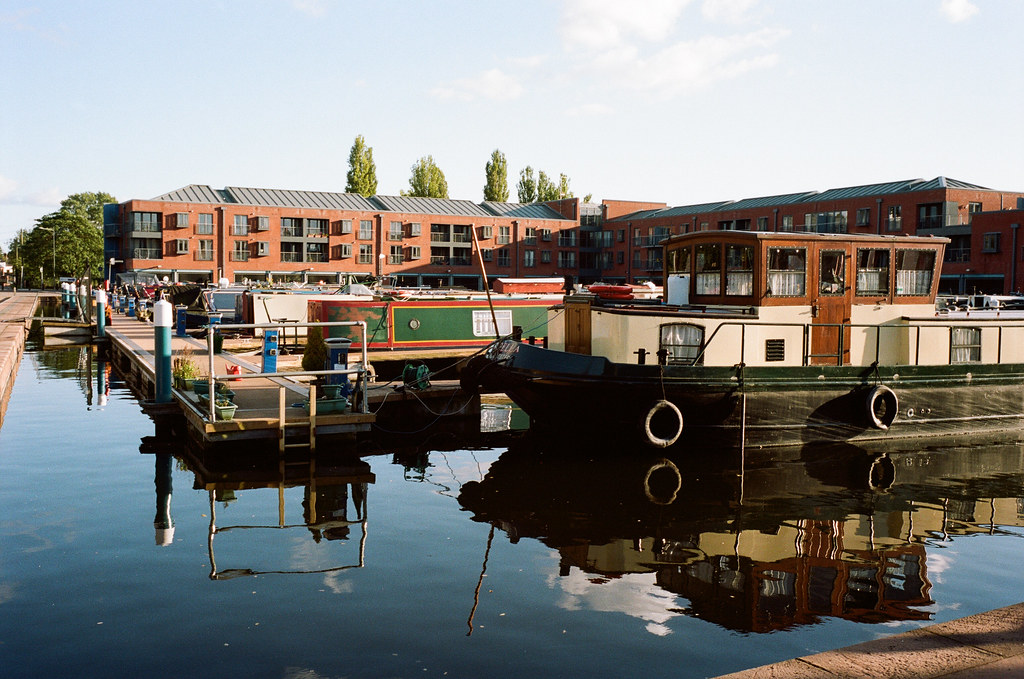









Comments
Tony on Leica M5 Review – The Odd One Out
Comment posted: 15/10/2015
It would be of interest to read reviews of the camera from the 1970s to see what people who were familiar with the pre-M5 Leicas thought about it.
Tony
Comment posted: 15/10/2015
Comment posted: 15/10/2015
Comment posted: 15/10/2015
Shawn Brezny on Leica M5 Review – The Odd One Out
Comment posted: 16/10/2015
Great review, the best I've read for the M5. I appreciate all the details and comparisons to the other M models. Thanks!
Comment posted: 16/10/2015
Gert-Jan Vons on Leica M5 Review – The Odd One Out
Comment posted: 17/10/2015
I enjoyed your review, and still learned some things about my M5 from both your article and the link posted by Gary.
Two remarks though: for me the rewind lever definitely turns when the film is advanced. Looking at how it is made it just has to turn, so if it doesn't the film was probably not sufficiently tensioned.
Concerning the strap getting in your face when using the 2 lugs on the side; I think it was intended for the camera to be worn on the left shoulder. When you then bring the camera to your face, the strap stays at the left of the camera and your right hand has free access to the shutter and advance lever.
When comparing the aesthetics, maybe the M5 should be compared to say your M3 with the Leica meter attached; that is a contest the M5 may end up winning :-)
Gert-Jan
Comment posted: 17/10/2015
Karl on Leica M5 Review – The Odd One Out
Comment posted: 17/10/2015
I never had my own Leica, but had opportunities to play with almost all M models, except "the cursed" M5.
Photos are absolutely brilliant - while looking at them I even started to desire to own one of these strange beasts as M5 is mostly concidered ;)
Are they all made with 50/1.5 Sonnar?
And - sorry for that, but I wanted to say it for a long time - you have a gorgeous wife :)
Comment posted: 17/10/2015
Benn Murhaaya on Leica M5 Review – The Odd One Out
Comment posted: 22/10/2015
The more I look at the Leica M5 the more it arouses my interest, especially thanks to this post. I just glanced over it quickly at work but I gotta give it a good read. Even though, I love the classic leica look, I always had problem with the ergonomics of shutter speed selection. on M5 it looks very neat and accessible. Plus in black paint, it does not look half bad!
Comment posted: 22/10/2015
Francois on Leica M5 Review – The Odd One Out
Comment posted: 24/10/2015
What's great about film Leicas is that whatever you pay for it you'll probably get back if you resell.
Comment posted: 24/10/2015
Anselm on Leica M5 Review – The Odd One Out
Comment posted: 04/01/2016
great review, thank you. I have a problem with the battery MRB 625 (Wein Cell) Do you place it with the sign towards the camera-body or otherwise?? Whichever way I place it - there seems to be no reaction - and the camera has been checked out by a Leica expert repair guy.
Thanks a lot in advance.
Comment posted: 04/01/2016
Comment posted: 04/01/2016
Comment posted: 04/01/2016
Comment posted: 04/01/2016
Comment posted: 04/01/2016
Logan on Leica M5 Review – The Odd One Out
Comment posted: 24/05/2016
Comment posted: 24/05/2016
Andrew on Leica M5 Review – The Odd One Out
Comment posted: 03/06/2016
I think of the M5 as where the film Leica was headed, taking everything the engineers had learned since the M3 and incorporating it into what for the time was meant to be the ultimate rangefinder camera. As for why it didn't do well, I place in two places. First, the SLR was what the pros wanted with its precise framing and ease in using wider and longer lenses than are feasible with the rangefinder. Second was the Leica CL which was less than 1/5th the price, but seamingly did much the same thing. The CL cut into M5 sales, rather than serving as a premium upgrade to the Japanese fixed-lens rangefinders like the Canonettes, Olympus Trips and Minolta 7s that Leitz and Minolta expected it to.
The RF market was vastly smaller once the Nikon F caught on, and smaller still with the F2, Nikkormat, Minolta SRT and the like giving SLR viewing, excellent optics and all at a much lower cost with easier use than the M5. Ten years sooner or $500 cheaper and the M5 may well have been template for later models just as the M3 was before it.
I'm out and about today with my M5 with a vintage 1937 Zeiss Sonnar (converted to Leica from Contax). In all ways it is a delight to shoot, though like every Leica before or after it really is only suited to a select ew focal lengths in a narrow range, most common being 35-50-90 thoug a few high mag finders or low mag finders can push the ideal slightly wider or longer. I happen to do most of my photography with a 35mm or 50mm lens, so Leicas work well. When I need wider or longer, I usually reach for an SLR, just like the market did when the M5 tried to compete.
Comment posted: 03/06/2016
Comment posted: 03/06/2016
Marianne on Leica M5 Review – The Odd One Out
Comment posted: 11/08/2016
Comment posted: 11/08/2016
Comment posted: 11/08/2016
Comment posted: 11/08/2016
RMR on Leica M5 Review – The Odd One Out
Comment posted: 19/10/2016
The clustered control made the camera easier to use and the M5's increased size made it easier to hold. I remember the early complaints from the Leica 'traditionalist crowd' - they were more emotional than logical - and Leica didn't understand how, or didn't want to flex it's own 'design-muscle' in the face of the traditionalists, even today.
Remember, when the M3 was released, there were those that complained it was bigger than the screw-mount, number series Leica cameras. Leica realized and not panicked that they could have adapted the best of the M5 ideas into the lesser M6 that the new technology allowed, they would have shown the traditionalists. 'who was boss'; even today, users complain. But the sad fact is, by Leica adhering to a set of regimented ideals, they have held back an excellent product that needs changes, changes that could be put into a new design while still having a 'traditional' line-up
Some new ideas. such as; a BETTER viewfinder with greater information including a simple informative display, a LARGER easier to use eyepiece, the clustered control, as an aside, the current digital M cameras need a faster, larger buffer, and while they're at it, I would really like to see a REAL supplementary battery grip that has room for a couple storage cards, and some controls as well.
After years of using Leica's it is their own unwillingness to bring greater usability even in the face of known complaints and feature desires and capability that drives me bonkers about the brand - and largely because because of the traditionalist base. I'm guessing there may be some who read this and call it 'nonsense', that's okay, but I'll stand by the ideas.
Comment posted: 19/10/2016
RMR on Leica M5 Review – The Odd One Out
Comment posted: 20/10/2016
The M5 was/is my favorite M camera. I never had any problems or difficulties with it in use and in fact found it very easy to adapt to. The meter is excellent and much better in use than what is currently offered from Leica due to it being that the metering area is a bit more precise. Too, the clustered control dial/layout is near perfect - everything in one easy to use design and location. The intermediate speeds are also an advantage for more precise exposure and when metering as well as being able to see the chosen shutter speed.
The main complaint from the traditionalist's is that the M5 was outside it's original form factor, caused by the needs of the room needed for the metering tech at the time.
The M5 wasn't a bad camera or idea, it was more that it was an idea ahead of the day's tech, that had they waited, Leica could have used most of the same M5 features - including the metering field and display, and the clustered controls into the future. Many forget that there were complaints of a larger camera when the M3 first appeared. Leica still could learn the M5 lesson; don't leave behind excellent design and feature improvements when moving into the future and even more, why not have a traditional line-up alongside a newer, more tech savvy and capable M camera with a bigger eyepiece, and improved viewfinder, and the above mentioned M5 advantages. Let the M5 live on with it's best features!!!
Comment posted: 20/10/2016
Comment posted: 20/10/2016
Comment posted: 20/10/2016
Paulo Jorge Moreira on Leica M5 Review – The Odd One Out
Comment posted: 16/07/2017
I never wanted a M5, but I couldn’t resist an old battered one for a song. I was always a sucker for ugly ducklings. The size and weight failed to impress me, as I am very used to the Canon 7/7s, same size, same weight or there about. There are leaf shutter rangefinders that are as imposing, the Fujica V2 or the Yashica Lynx 14 spring to my mind, but there are others. So, from a user point of view, the size of the thing is far from being a deterrent. By comparison, the Leica CL feels dingy, too light, very toy like (only in comparison). In my modest opinion, Leica took a good look at the last Canon rangefinder models and figured out that if it worked for them, it should work for Leica as well. It works for me, for sure. The luxury of having a TTL meter, shutter speeds and exposure in the viewfinder are something that I cherish a lot. I am surprised that no one mentioned that the viewfinder is different from the M6, it exhibits distortion, it’s not as bright (again, more Canon 7/7s then M6), but it could be due to my particular unit. The camera feels exactly like the M6 when pressing the shutter, same noise, same refined action, same winding force, with my eyes closed, I wouldn’t be able to tell which was which. I really have no trouble in having the shutter button or rewind crank at places different than usual, they work very well. Another thing that is not good is the off-set cold shoe, it’s terrible to use an external viewfinder with an off-set position. I used to have that problem in my Konica Hexar, even with a 12 mm lens.
Like I wrote, I am no Leica historian or diehard, but I do have some trouble in accepting the orthodox theories regarding the failure of the M5. I really can’t see why anyone would prefer the CL to the M5. The CL is a cute little camera, but other than that, I can’t see any interest in it. You get a squinty viewfinder with all the framelines always present, you don’t get a frameline for 35 or 40 mm because someone decreed that 40 mm was all you needed. How usable and interesting could that camera be for someone used to an M camera? There is the price issue, of course, but everybody knows that Leicas aren’t cheap. In my humble opinion, by the time the M5 was launched , the market for a pro rangefinder was almost gone, the launch of compact SLRs didn’t help either. Judging by the condition of many M5s, pros saw no problems in using them (like mine), it was the Leica fans disappointment that possibly killed the camera, not serious users. Had the camera broke some new ground in camera design like automatic exposure, things would have been different, but it didn’t. The M5 is possibly the only M Leica made for shooting and not for display or to be revered, just to take good pictures. I think it does the job quite well.
Comment posted: 16/07/2017
robert bosson on Leica M5 Review – The Odd One Out
Comment posted: 17/08/2017
5 Frames with a Leica M5 - by Petros Katradis - 35mmc on Leica M5 Review – The Odd One Out
Comment posted: 01/11/2018
Martin Hugh Henley on Leica M5 Review – The Odd One Out
Comment posted: 08/02/2019
Comment posted: 08/02/2019
A Leica M4-2 Review - Leica's Redheaded Stepchild - by Ryan HK - 35mmc on Leica M5 Review – The Odd One Out
Comment posted: 15/02/2019
The Konica Hexar RF - A Meandering Review of my Experiences so far - 35mmc on Leica M5 Review – The Odd One Out
Comment posted: 04/03/2019
Max Jenkins on Leica M5 Review – The Odd One Out
Comment posted: 18/04/2019
As it happens, I just had my M5 serviced for the first time since it arrived from Wetzlar. DAG did the work - a standard CLA and adjusting the meter circuitry to 1.5 volt batteries. Let me note that the heavily used camera still functioned flawlessly (excepting the kluge workarounds for the defunct 1.3 V power source) with precise exposures that surely reflect accurate, or sufficiently accurate, shutter speeds - I really sent it in just to ensure it had the wherewithal to last through my custodianship without fail.
At least in the case of my camera (and another I had in the 70s, before deciding I didn't need two), the mechanical standard and feel of the camera were fully equal to my M3s and M4s. The viewfinder is more cluttered, of course, and that is less satisfying than the earlier M cameras. The increased size of the camera never bothered me, and the loading from the bottom, a "vice" of all Leica Ms and Barnacks, was not a problem. That said, aside from a brief year or so after university, I never tried to earn my way by taking photos. Had I been a photojournalist, I might have a very different opinion of the loading procedures. As an amateur for more than fifty years, I do not recall ever feeling any particular angst while loading a Leica.
I do like the restricted angle meter. I also like it the R-series, and use the option in other cameras when it is afforded. It is not as easy to use as good matrix metering, but with a little more consideration, it results in just as high a good exposure rate. The mechanics of flipping a meter arm into and out of the picture area would seem to be delicate, but I have never had mine fail, or even heard of one failing.
I agree that the Leica M5 is an acquired taste, though. I don't much like the side strap arrangement - mine's a two-lug. It sometimes seems to be a little large, not so much in handling as in carrying on the strap or in a small bag. As acquired tastes go, though, I think the M5 is one of the more rewarding.
Oh - one of the comments mentioned the M4-2 as a redheaded step-child. Again, my mileage differs. I bought my M4-2 new in 1980. Since then it has been twice around the world - from Thailand and the Arab Emirates to the Canadian and Alaskan Arctic, and lots of places in between. Again - zero failures or problems, except replacement of the rewind knob (when I dropped it and smashed it out of shape) and one CLA at the same time. That's 39 active years - no storage time.
I like and use many cameras, but there really is something about a Leica.
Comment posted: 18/04/2019
Dial M for mock-up: The late-model fake Leicas - Kosmo Foto on Leica M5 Review – The Odd One Out
Comment posted: 30/09/2020
Jon Atherton on Leica M5 Review – The Odd One Out
Comment posted: 28/08/2021
Comment posted: 28/08/2021
Comment posted: 28/08/2021
Comment posted: 28/08/2021
FED-6TTL: Electric dreams - Kosmo Foto on Leica M5 Review – The Odd One Out
Comment posted: 04/01/2022
Matt K on Leica M5 Review – The Odd One Out
Comment posted: 28/07/2023
It is my entry into Leica, as I was desperate to get something after missing amazing deal on M9 (I know digital).
Camera should arrive tomorrow when I’ll be able to compare it to Bessa R4A, Bessa T and Hexar RF
Will it change my photography? Most likely not
I bet I’ll just struggle more on deciding which camera I should load with film.
Truly addicted from film photography but also addicted from buying all sorts of cameras.
Nevertheless I will definitely put few roll within coming weeks and enjoy the experience
Matt
Henning Wulff on Leica M5 Review – The Odd One Out
Comment posted: 21/01/2024
Another thing that was a problem that wasn't immediately apparent was that Fuji film was incompatible with the M5 at the time. Fuji spools didn't have lugs in the spool at the bottom, so you couldn't rewind the film. I learned that the obvious way. Fuji wasn't the major player in Canada at the time, but its films were becoming more popular and were offering a different palette than Kodak, so not being able to use them was a strong negative. Fuji put in the bottom lugs later, but by then I'd sold the M5 and bought an M4 again.
As far as lenses went, I had my Super Angulon modified to allow use, but never was able to use my Hologon. I couldn't use my DR Summicron, but that wasn't a major inconvenience. I got a Visoflex III, as my Viso II didn't fit. I liked the new shutter speed dial, even thought it felt rather floppy and flimsy in comparison to previous ones. The shutter action, what with having to push the metering arm around, felt different enough from the M4 and former Leicas that it always put me off a bit. The viewfinder had pluses and minuses, what with displaying the shutter speed but seeming a bit dimmer and that somewhat vaguer, rounded rangefinder patch.
I had the camera a little over a year and put maybe 150 rolls through it, but never felt that comfortable with it, and gradually used it less and less. It's a camera I've never regretted selling.